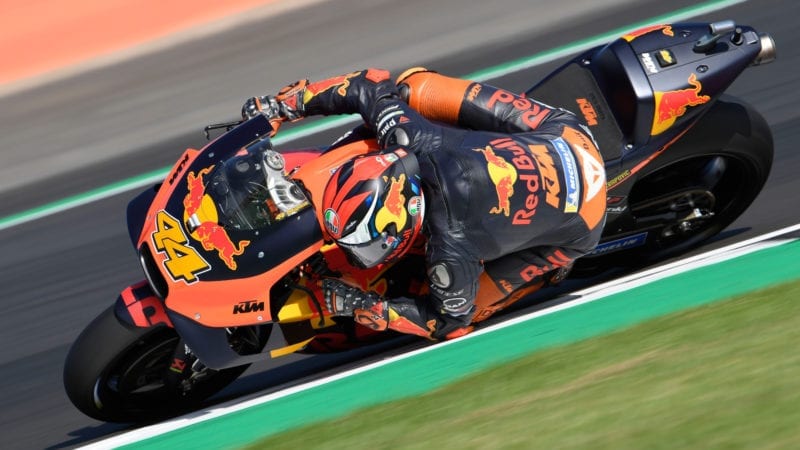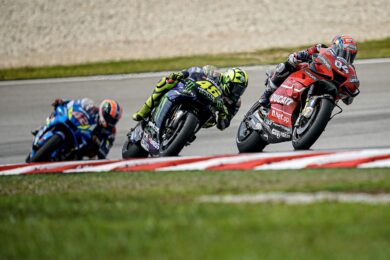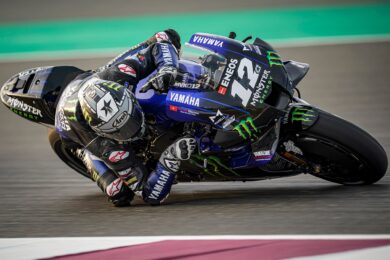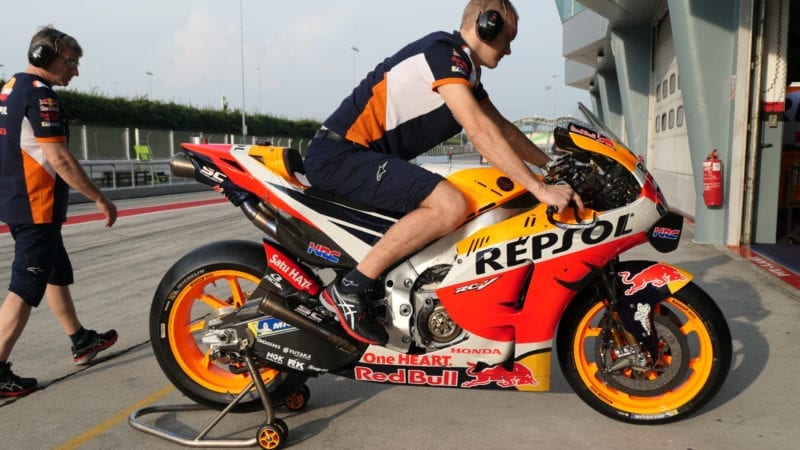Espargaró enjoys V4s because by preparing well physically and mentally and by riding in a certain way, there’s more for the rider to invent. Also a V4 is a better battle bike because while inline-four riders want the bike nicely settled so they can sweep through corners with huge speed V4 riders can dive to the apex, flick the bike on its side, pick it up and gas it out. This has obvious advantages when you’re defending or attacking.
There’s no doubt that Espargaró knows how to get the most out of a V4. The big question now is how will he go on Honda’s RC213V?
The KTM and Honda share some similarities, most importantly their 90-degree V4 engines. Early RC16s even looked similar to the RC213V, which was hardly surprising because several HRC staffers had defected to KTM.
Last year KTM finally turned the corner, from also-rans to race winners, making some people wonder whether Espargaró will regret leaving the Austrian manufacturer. But the 29-year-old has wanted to ride for Repsol Honda for years, so this is a lifelong ambition fulfilled.
It’s very difficult to predict how a particular rider will gel with a particular machine because racing motorcycles aren’t that straightforward. Multiple factors have to coalesce – mind, muscle and metal. But if anyone can make the Honda work it’s Espargaró. He is certainly many times more suited to the RC213V than smooth-riding Jorge Lorenzo, who was totally bamboozled by the bike in 2019.
Espargaró likes to ride at the edge of control, rather like the team’s six-times MotoGP champion Marc Márquez. He is a full-commitment rider who is happy to flirt with disaster to get the maximum out a motorcycle and he doesn’t care if the bike is dancing around beneath him.

Espargaró is mentally and physically prepared to ride more demanding V4 MotoGP bikes
Red Bull
Espargaró’s fitness regime is tailored to give him the strength to physically dominate a V4. Like Márquez he is very muscular, so he can turn the bike into corners on a knife-edge and handle headshakes on the exits.
Remember that one reason for Takaaki Nakagami’s transformation last year was a new training regime designed to make him as strong as Márquez.
Márquez’s absence from the 2020 MotoGP championship and Cal Crutchlow’s injury problems gave Honda its first winless season since 1981. This was a huge black cloud for Honda, but every cloud has a silver lining, which may brighten Honda’s 2021 campaign.
HRC engineers were able to change focus, from trying to make their otherworldly talented number-one rider even faster to working to make the RC213V friendlier for its other riders.





